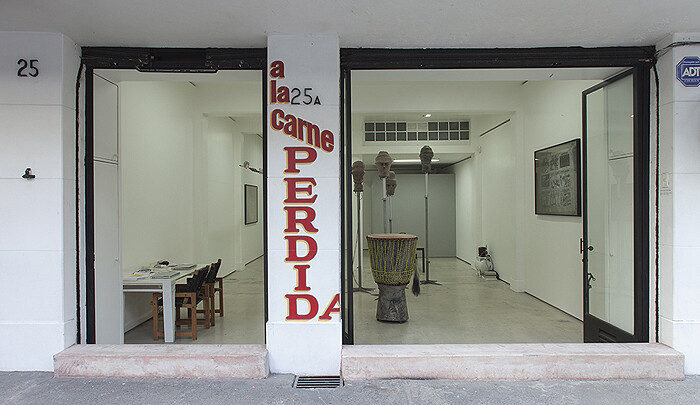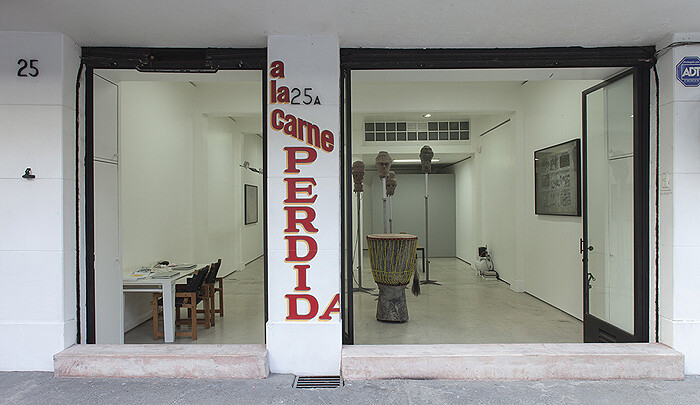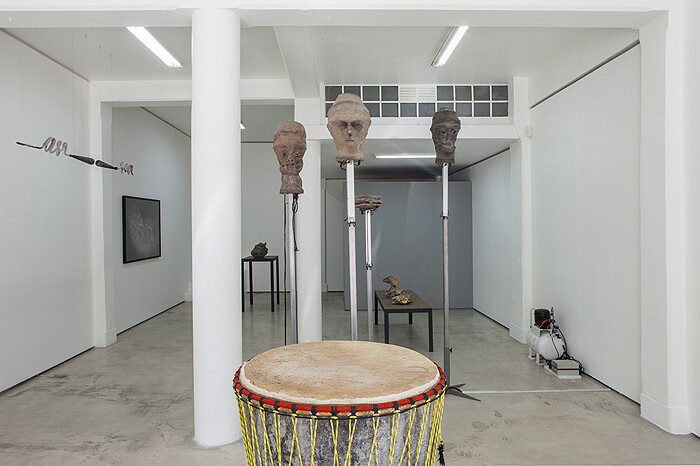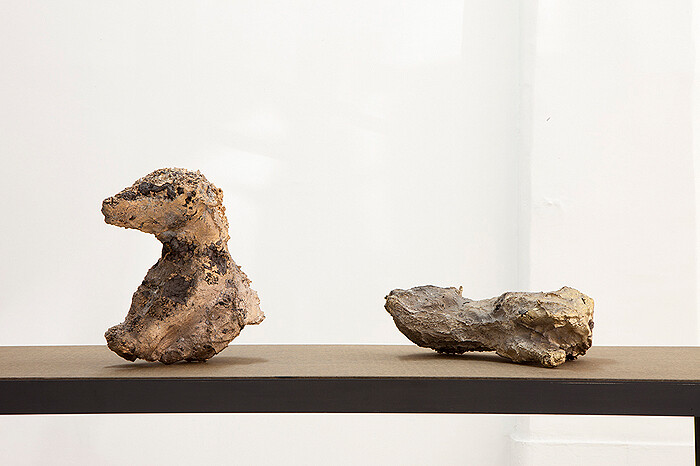One thing I have noticed about Mexico is a proclivity to let no part of an animal go to waste. Just the other night, I was in a famous twenty-four-hour taquería, El Borrego Viudo, and on the menu were not only cabeza (lamb’s head) and lengua (beef tongue), but also sesos (need I translate?). It is perhaps only a coincidence that the work of Paris-based artist Jean-Marie Perdrix abides by a similar ethic, but a coincidence that nonetheless sits comfortably within the local context. That ethic, however, is anything but straightforward.
Take, for example, one of the sculptures on view here, the large djembe drum (Untitled, 2011). This apparently unremarkable object represents the years of research in Burkina Faso, during which Perdrix sought a means to recuperate and put to good use the over-abundance of plastic trash bags that afflicts the region like a plague. Having developed a non-toxic technique to melt the plastic down into a solid material, he has also found structurally and culturally relevant uses for it, such as for the making of crossbeams and djembe drums. Both an emblem of civic virtue and a process-driven sculpture, the dynamic object would seem to be unsullied by any but the most wholesome intentions, that is, until you become aware that the pouch hanging from the drum’s lateral weave are actually the testicles of the bull whose hide provided the drum with its surface. Startling as it might initially seem, is such a frank tribute really so unwholesome?
Three other sculptures take the ethical question to a similar, if more problematic extreme. Entitled Cheval à chair perdue (Horse of lost flesh) and Chien et chienne à chair perdue (Dog and bitch of lost flesh), these bronzes were also poured in Burkina Faso, where the artist produces works. They consist of one horse head and two truncated dog’s bodies whose realism issues from the fact that they were cast, using the lost wax technique, from real animals, hence the title of the show (“A Carne Perdida” or “to lost flesh”). However, their realism is complicated by their extraordinarily rich texture, which features shards of unburnt coal, bronze, and random parts of metal, a byproduct of using recycled (as opposed to pure) bronze. Obviously, not for the faint of heart or animal lovers, these awesome and terrifying objects bring to mind both Pompeii’s dog and the unsettling Gothicism of Berlinde De Bruyckere’s equine sculptures.
So it follows that, despite any good intentions that might motivate it, this is not necessarily feel-good art (i.e. that which purports to save the world)—a fact which is further borne out by the presence of four pneumatic head sculptures, which randomly hiss, expand, and collapse like accordions, and whose formal evocation of Thomas Schütte hardly accounts for their disquieting and phantasmagoric strangeness, plus two tenebrous photos and a hanging bronze sculpture, which biblically, if fatalistically reads así sea (so be it). Potentially the stuff of nightmares, the classically-minded works in this show nevertheless seem to argue for a more complex dialectical, twenty-first century conception of ethics, in which “taking the bull by the balls,” to employ a misused metaphor, implies something more than Manichaean distinctions between good and evil.





